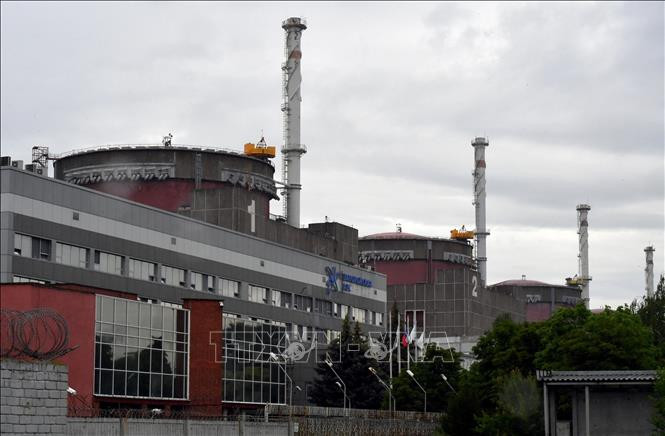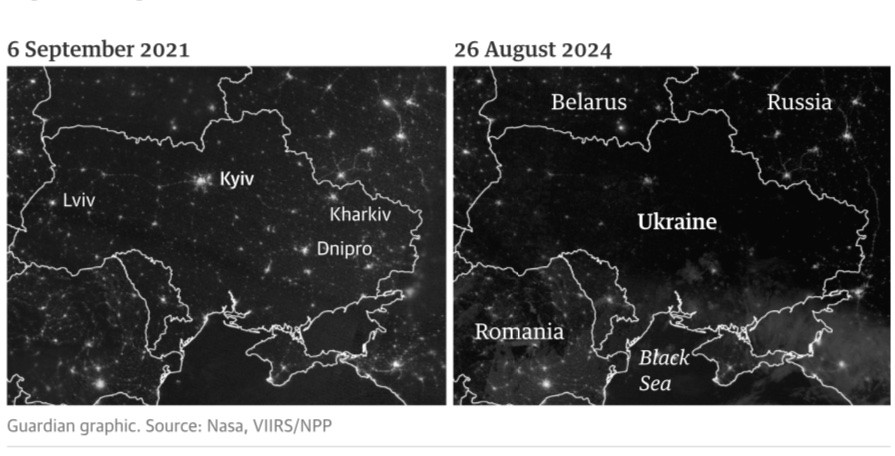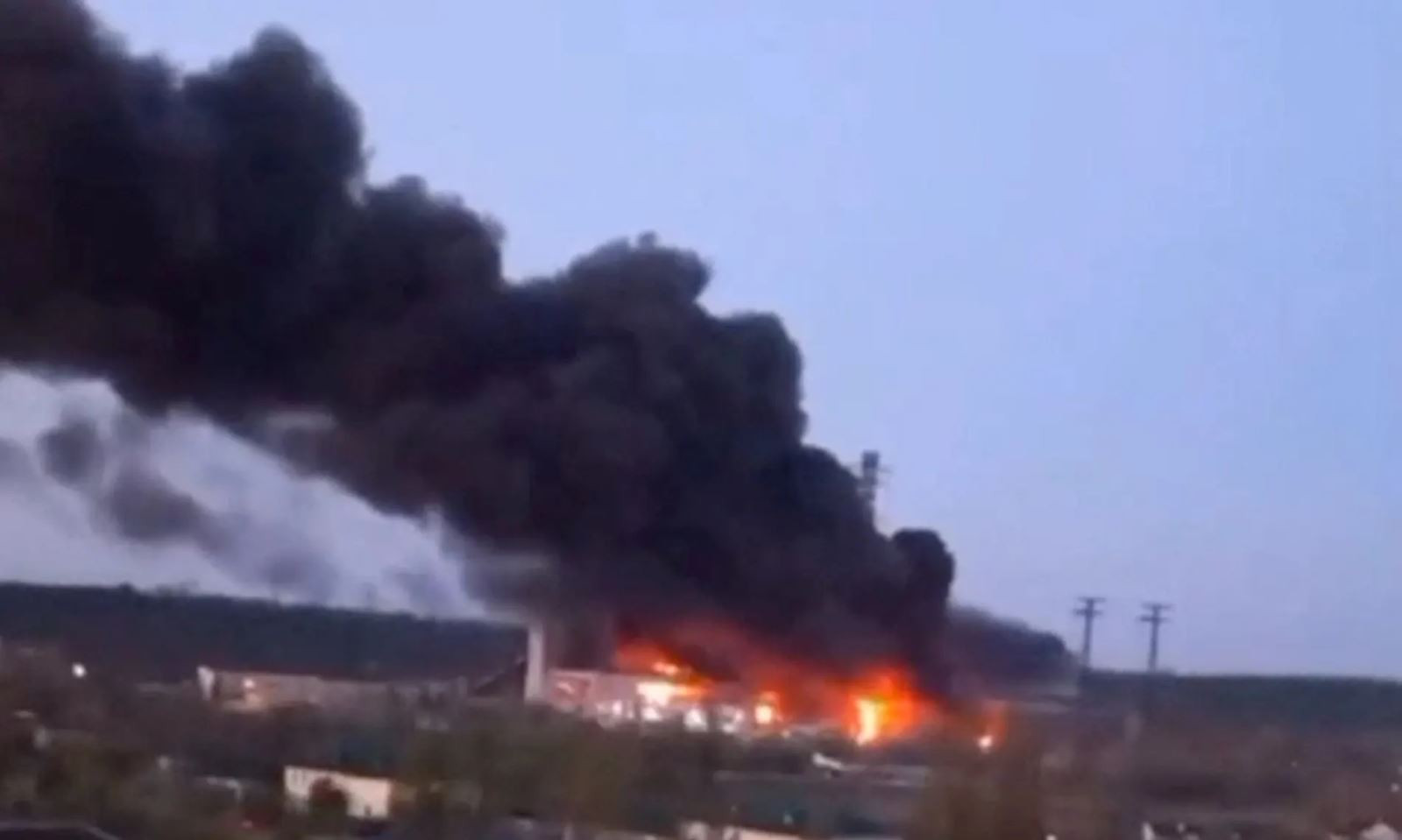Ukrainian authorities are struggling to assess the damage from one of the largest air strikes carried out by Russia earlier this week, which targeted energy infrastructure across the country.

While much of Ukraine is still experiencing the end of a hot summer, Moscow's air strikes on Kiev's energy infrastructure this week have highlighted concerns about the harsh winter months ahead.
“This winter will definitely be very harsh,” said Nataliia Shapoval, director of the Kiev Institute of Economics.
RT quoted the Russian Defense Ministry as confirming on August 26 that the country's military carried out high-precision strikes using drones, long-range air and sea-launched weapons against Ukraine. The targets of the attack were facilities supporting the Ukrainian defense industry complex. These included power substations in Kiev, Vinnitsa, Zhitomir, Khmelnytsky, Dnepropetrovsk, Poltava, Nikolaev, Kirovograd, Odessa, as well as gas compressor stations in Lviv, Ivano-Frankivsk and Kharkov.
“All designated targets were hit. Electricity was cut off in many areas of Ukraine. The delivery of weapons and ammunition to the front line was disrupted,” the Russian Defense Ministry said.
President Volodymyr Zelensky confirmed that critical infrastructure in most regions had been hit. He called it “one of the largest combined attacks” Ukraine had suffered in months. Kiev estimated that the Russian military used more than 100 missiles and 100 drones.

While spring airstrikes typically target power generation capacity, the latest attacks have largely focused on distribution infrastructure, such as power substations, observers say. The attacks led to emergency power outages across the country, which have since subsided into rolling blackouts that have affected the capital Kiev and several other cities.
Ukrainian Energy Minister German Galushchenko described the current situation as “very difficult”.
Estimates suggest that even before this week’s airstrikes, Russia had destroyed about half of Ukraine’s energy capacity. Repairs have been underway throughout the summer, but Kiev still faces concerns that further airstrikes could turn a “difficult situation into a catastrophic one.” Meanwhile, Ukraine has renewed its calls for more air defense support from its Western allies.
Mr. Andrian Prokip, an energy expert at the Kennan Institute in Washington DC, said that it was not easy to improve the situation, but further attacks could make the situation worse.
“Even in the most optimistic scenario, there will still be scheduled outages. How that plays out will depend on the temperature. If the winter temperature is -5 degrees Celsius, the scheduled outage could be 7 hours off, 2 hours on,” he said.

At a June conference in Berlin, President Zelensky accused Russia of destroying 80 percent of Ukraine’s thermal power generation and a third of its hydroelectric power generation. But on August 27, he declined to elaborate on the damage caused by airstrikes the day before.
“Let's keep the news about the status of our energy facilities and what we're doing there,” he said.
“It was a major attack and the assessment is ongoing,” said Mykhailo Podolyak, an adviser to President Zelensky. “We know what is needed: repair work and, in parallel, increased air defense support.”
Ms. Shapoval's institute estimates that since the launch of the special military operation, Russia's attacks on Ukraine's energy infrastructure have caused $16 billion in damage as well as $40 billion in revenue.
Experts say Ukraine is certainly better prepared for winter now than it was at the start of the conflict. Hospitals, critical infrastructure and many businesses are equipped with generators. In Kiev, life has continued almost as normal during this week’s extended blackout, with small generators set up and running outside cafes, restaurants and other businesses.

But the frequent power cuts expected during the winter could have a ripple effect. The rolling blackouts could also spell disaster for heavy industry in the east of the country.
There are “a lot of big and small stories” about the power outages, Ms. Shapoval said. In parts of the east, where the threat of attacks is constant, power shortages have made it difficult to power appliances and access the internet. In some high-rise buildings, power outages have prevented water from being pumped to upper floors. The “doomsday scenario” is that Russian airstrikes have caused severe water and power shortages.
In June, European Commission President Ursula von der Leyen said Brussels planned to finance the development of small-scale generators across Ukraine. She said the aim was to help decentralize the electricity system and thus increase Ukraine’s resilience.
Regulations on gas turbine power generation have also been relaxed, leading to a rise in small-scale power generation, which can be done anywhere there is a gas supply and electricity cables, with systems built inside shipping containers or small buildings. Mr Prokip said some companies were doing this for their own use, while others were connecting to the grid and then selling it on the market.
Russia has resumed its attacks on Ukrainian energy facilities following Kiev’s surprise attack on the Kursk region earlier this month. Kiev has been trying to change the dynamics on the battlefield, even as its forces remain outgunned in the eastern Donbass region.